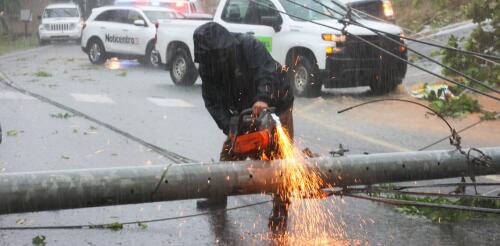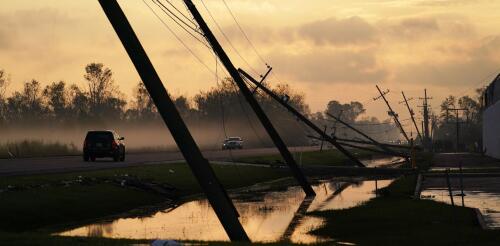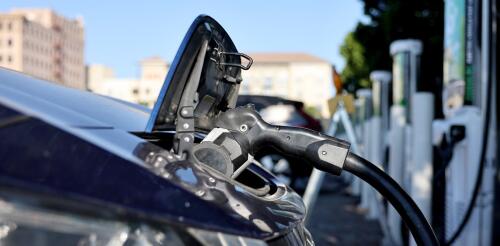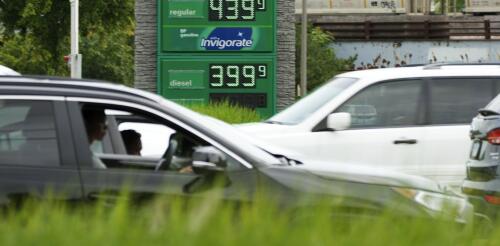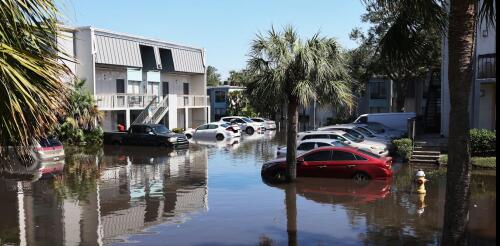Electricity
Five years after Hurricane Maria wreaked havoc on Puerto Rico, Hurricane Fiona has killed at least four people, caused widespread flooding and left hundreds of thousands of residents without water or power. Maria caused extensive damage to Puerto Rico’s power grid in 2017 that left many residents without electricity for months. Rebuilding it has been hampered by technical, political and financial challenges. Carlos A. Suárez and Fernando Tormos-Aponte are social scientists who study Latin American politics and environmental justice. They explain some of the factors that have hindered efforts to recover from Maria and prepare for subsequent storms on this island with a population of 3.2 million people. Failed promises from privatization Carlos A. Suárez Carrasquillo, Associate Instructional Professor, Political Science, Center for Latin American Studies, University of Florida In less than a century, Puerto Rico’s electricity system has gone full circle fr...
In areas where storms or extreme heat and cold have knocked out the power for days at a time, people are starting to ask whether investing in rooftop solar and battery storage systems can keep the lights on and the air conditioner running when the power grid can’t. When the grid goes down, most solar systems that lack a battery will also shut down. But with batteries, a home can disconnect from the grid. Each day, the sun powers the home and charges up the batteries, which provide power through the night. Our team at Berkeley Lab explored what it would take for homes and commercial buildings to ride out long power outages, of three days or more, with solar and batteries. How much can solar + storage do? For a 2022 report, we modeled a generic power outage for every county in the U.S., testing whether a rooftop solar system combined with a 10- or 30-kilowatt-hour battery could power critical loads, like refrigeration, lighting, internet service and well pumps; if it could...
The Biden administration is using tax credits, regulations and federal investments to shift drivers toward electric vehicles. But drivers will make the switch only if they are confident they can find reliable charging when and where they need it. Over the past four years, the number of public charging ports across the U.S. has doubled. As of August 2024, the nation had 192,000 publicly available charging ports and was adding about 1,000 public chargers weekly. Infrastructure rarely expands at such a fast rate. Agencies are allocating billions of dollars authorized through the 2021 Bipartisan Infrastructure Law for building charging infrastructure. This expansion is making long-distance EV travel more practical. It also makes EV ownership more feasible for people who can’t charge at home, such as some apartment dwellers. Charging technology is also improving. Speeds are now reaching up to 350 kilowatts – fast enough to charge a standard electric car in less than 1...
Fossil fuels are the leading driver of climate change, yet they are still heavily subsidized by governments around the world. Although many countries have explicitly promised to reduce fossil fuel subsidies to combat climate change, this has proven difficult to accomplish. As a result, fossil fuels remain relatively inexpensive, and their use and greenhouse gas emissions continue to grow. I work in environmental and energy law and have studied the fossil fuel sector for years. Here’s how fossil fuel subsidies work and why they’re so stubborn. What is a subsidy? A subsidy is a financial benefit given by a government to an entity or industry. Some subsidies are relatively obvious, such as publicly funded crop insurance or research grants to help pharmaceutical companies develop new drugs. Others are less visible. A tariff on an imported product, for example, can subsidize domestic manufacturers of that product. More controversially, some would argue that when a gov...
Flooding from hurricanes Helene and Milton inflicted billions of dollars in damage across the Southeast in September and October 2024, pushing buildings off their foundations and undercutting roads and bridges. It also caused dozens of electric vehicles and other battery-powered objects, such as scooters and golf carts, to catch fire. According to one tally, 11 electric cars and 48 lithium-ion batteries caught fire after exposure to salty floodwater from Helene. In some cases, these fires spread to homes. When a lithium-ion battery pack bursts into flames, it releases toxic fumes, burns violently and is extremely hard to put out. Frequently, firefighters’ only option is to let it burn out by itself. Particularly when these batteries are soaked in saltwater, they can become “ticking time bombs,” in the words of Florida State Fire Marshall Jimmy Patronis. That’s because the fire doesn’t always occur immediately when the battery is flooded. Accordin...
